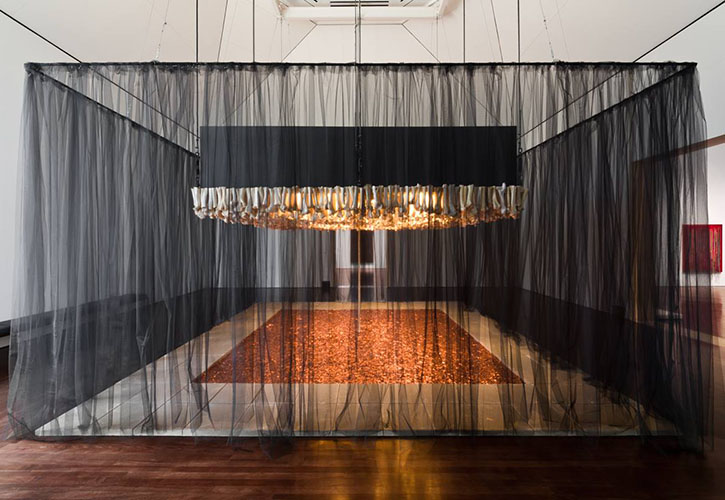Vanessa Davidson Strives to Amplify Artists’ Voices as Blanton’s Curator of Latin American Art

From the time she was a student studying abroad in Argentina, Vanessa Davidson has been entranced by the rich, vast world of Latin American art.
Davidson spent a year studying at the Universidad de Buenos Aires as part of her undergraduate degree at Harvard University — in fact, she petitioned to study abroad since Harvard didn’t yet offer courses in Latin American art. It was then, while taking classes in Latin American art history, Argentine poetry and history and pre-Columbian art, that Davidson says she became “mesmerized” by her studies. “That was it. I was bitten. I was hooked.”
Davidson was recently appointed as the new curator of Latin American art at the Blanton Museum of Art, concluding an international search for the position. Previously the Shawn and Joe Lampe Curator of Latin American Art at the Phoenix Art Museum (PAM), she holds a B.A. in Hispano-American Literature from Harvard and a PhD in 20th-Century Latin American Art History from New York University. She succeeds Beverly Adams, who joined the department of painting and sculpture at the Museum of Modern Art this spring.

In her new role, Davidson will spearhead the presentation and development of the collection, conduct research and organize exhibitions. In fact, she’s already working to bring the a retrospective of the work of celebrated Colombian visual artist Oscar Muñoz to a wider audience in the U.S. Muñoz won the 2018 Hasselblad Award in Photography, which recognizes major achievements in the field.
The Blanton has always been a beacon of Latin American art history. It was the first museum in the country to have a curatorial position dedicated to modern and contemporary Latin American art, and its collection now includes 2,800 works that run the gamut from drawings and sculptures to conceptual art and installation, each of which Davidson called “little masterpieces.”
“Latin American art has always had a very privileged and special place among this museum’s programming and collecting history. The collection has a tremendous range in terms of geography and chronology. It’s one of the best collections of Latin American art in the country, if not the world,” said Davidson.

Her excitement about her new position is also rooted in the “collaborative spirit” that exists among the Blanton’s curators and support staff. “We all work together as a very tight-knit team, which allows the opportunity for dialogue among colleagues, and that always makes the project stronger,” she noted.
Describing her personal style as a curator as inclusive and “prolific,” Davidson spoke about her eight-year tenure at the PAM, during which she organized thirteen diverse exhibitions on several major figures in Latin American art, including Brazilian sculptor and installation artist Valeska Soares, Mexican painter Rufino Tamayo, and Mexican multidisciplinary artist Carlos Amorales. She cited her strong desire to amplify artists’ voices in her work. “In my writing, catalogs and labels for artwork, I always love to include the artist’s voice wherever possible, to let them define their own practice for the viewer to contemplate. I hope that my voice is one that brings many other voices into the picture,” she said.
When asked to name her favorite piece in the Blanton’s collection, Davidson didn’t hesitate. “I’ve always been drawn to Cildo Meireles’s “Missão/Missões (How to Build Cathedrals).” Meireles’s installation is indeed striking, incorporating materials like 600,000 pennies, 800 communion wafers and 2,000 cattle bones.

Geographically and culturally, the Blanton’s Latin American art collection is wide-ranging, representing more than 600 artists from Mexico, South and Central America and the Caribbean. This increased visibility of Latin American artists that span regions, histories and identities is crucial, according to Davidson. “I feel that we should never forget that Latinx art makes up part of Latin American art, as well as Latin American artists living in the diaspora, Chicanx artists and Latinx artists who are second- or third-generation individuals living in this country. They help to shape this discourse.”
Globalization has allowed these artists to engage in cultural dialogue with others “both within and outside their country’s borders,” said Davidson. “I think it’s very interesting to note that, as opposed to our president’s current wish to create an impenetrable wall, the walls are coming down in Latin America — the boundaries between these countries are porous. Latin American artists are able to travel and visit other artistic communities like no time before, and that only enriches the dialogue and the conversation about what Latin American art is.”
